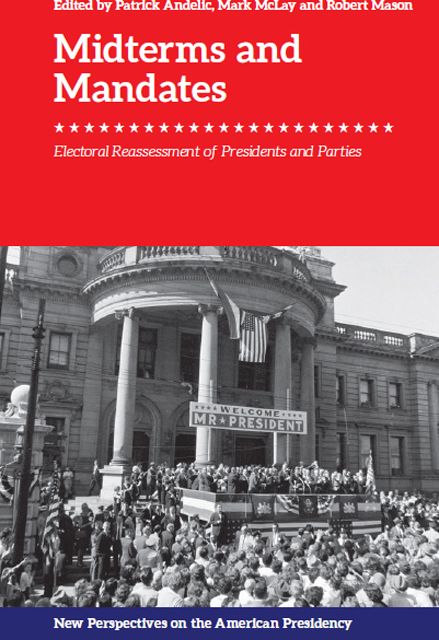Book contents
- Frontmatter
- Contents
- List of Figures and Tables
- Acknowledgements
- Notes on Contributors
- Preface: Why Midterms Matter
- Introduction: Midterms and Mandates, Presidents and Parties
- Part One Midterm Elections in Institutional Context
- Part Two Testing the New Deal Coalition
- Part Three The Republican Resurgence
- Index
6 - Midterm Elections, the Republican Party, and the Challenge to New Deal Liberalism, 1946–1958
Published online by Cambridge University Press: 07 June 2023
- Frontmatter
- Contents
- List of Figures and Tables
- Acknowledgements
- Notes on Contributors
- Preface: Why Midterms Matter
- Introduction: Midterms and Mandates, Presidents and Parties
- Part One Midterm Elections in Institutional Context
- Part Two Testing the New Deal Coalition
- Part Three The Republican Resurgence
- Index
Summary
Republicans sought to deploy the midterm campaigns from 1946 to 1958 as a means of achieving a larger revitalisation of their party’s fortunes. The political context that they encountered was one of disadvantage, rooted in the economic crisis that took hold under Herbert Hoover and then in the agenda of government activism that Franklin D. Roosevelt pursued to tackle that crisis. As Iwan Morgan shows in Chapter 4, New Deal liberalism relegated Republicans to minority status in the two-party system, to habitual defeat at the polls, and to a focus on opposition in response to Democratic initiatives – an electoral descent symbolised by the historically unusual decline suffered by their party in the midterms of 1934. Taking place in the shadow of two presidential defeats for their party (those of Thomas E. Dewey in both 1944 and 1948) and then two victories (those of Dwight D. Eisenhower in 1952 and 1956), these midterm contests featured efforts by Republicans collectively to mobilise a mandate against New Deal liberalism. Hostility to organised labour was often a key thread of this odyssey. Republicans, seeing unions as powerful in building support at the polls for their Democratic rivals, pursued projects of organisational renewal that were designed to achieve a similar level of capacity in practical politics. A challenge to the labour reforms of the New Deal was, furthermore, an important target of their policy agenda.
Midterm election results twice during this period were suggestive of a watershed in public opinion and in public policy. In 1946, Republicans gained control on Capitol Hill for the first time since the arrival of the Great Depression, adding – to their existing totals – fifty-five seats in the House of Representatives (with a 53.5 per cent share of votes cast) and twelve seats in the Senate. Such a level of change in the parties’ fortunes characterises few midterm contests in American electoral history. But twelve years later, the elections of 1958 also involved upheaval, this time to the Republicans’ detriment. Already in secure control of both Houses, Democrats made net gains of forty-nine House seats (with a 55.5 per cent share of votes cast) and twelve Senate seats, gains that advanced their party to large majorities on Capitol Hill.
- Type
- Chapter
- Information
- Midterms and MandatesElectoral Reassessment of Presidents and Parties, pp. 143 - 167Publisher: Edinburgh University PressPrint publication year: 2022



